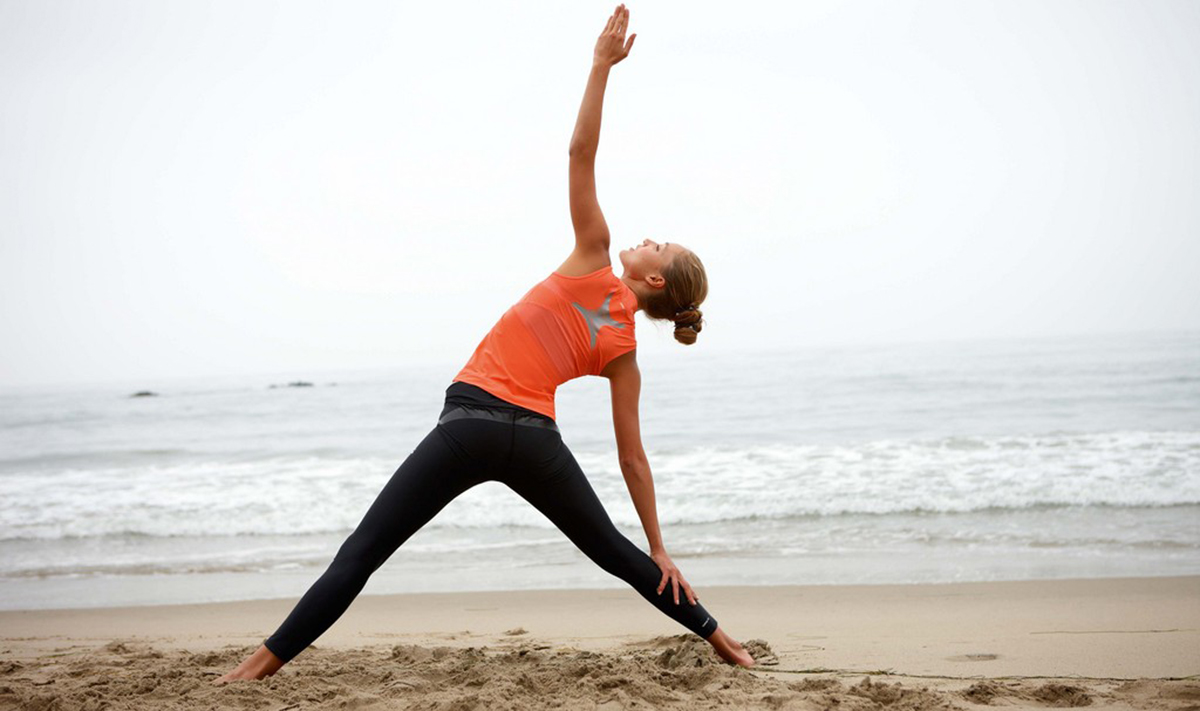Table of Contents
One way would be to learn a few basic asanas and practice them, and we'll get to them shortly. Another would be to know what the expected etiquette is - there's nothing worse than being the person in church who stands up as everyone else sits!

Do:
- Show up to class a few minutes -say, 10-15 - early. It gives you time to relax into what you're doing, instead of rushing through the door. Some teachers won't let you in if you're late because it disrupts the class for everyone else.
- Bring a towel. you're going to need it.
- Focus and calm your mind. Setting an intention - a goal to work towards that you hold in your mind while you practice - can be helpful here.
Don't:
- Show up having just eaten. It's unpleasant!
- Bring switched-on cellphones or tablets or other connective devices to your class. Leave them outside or turn them off.
- Push it - you're supposed to be nurturing yourself, not punishing yourself. You should let your yoga develop, not try to force it.
- Make it too social. Acknowledgements and greetings are fine, but long or loud conversations aren't really what anyone's there to do.
Here are some of the more basic postures that you'll likely find in any yoga class, and tips on how to practice them at home
Downward dog
This is often the first yoga asana you'll learn. Most yoga classes will incorporate it.
Your feet should be about shoulder width apart, and your hands should be about the same. In downward dog you should form two straight lines: one from your heels to your hips, and one from your hips, through your shoulders, to your hands. You're in an 'A' shape on the floor. Point the top of your head at the floor and try to lengthen your neck and back, looking back at your feet. Try to move your shoulders towards your legs without bending your back. Many people will feel this as stretch in their calves in the first instance!
Warrior
There are three main variations - and a host of minor ones - on the warrior pose. I'm just going to talk about warrior 1. Start in downward dog and step forward with your left foot, putting it outside your hands. That should be a long step. Stand upright and you should find your left leg is at about 90 degrees, with the thigh parallel to the floor. Your back leg should be straight and the toes should turn in slightly, while the front toes should face straight forward. Make sure your front knee is rotated out - don't let it buckle inwards. Raise your hands overhead, palms together, following them with your eyes so that your chest rises and your head moves back. Return to downward dog and repeat on the other side.
Mountain
Mountain pose is often found at the beginning or end of a set of poses. You stand with your feet hip-width apart and with your arms at your sides. As you breathe in, raise your arms overhead until the plasm meet, with your chest raised and your gaze following your hands. Lower your hands and repeat.
Bridge
You can practice basic glue bridges - they're a good preparation for any form of physical exercise; but yoga has its own traditional bridge pose, which is done like this:
Lie on your back with your feet close to your buttocks and press up off the floor. Put your hands clasped together under your back and press down into the floor with them as you raise your hips. This adds to the drive lifting your hips off the floor.
See Also: Yoga-General Info
Corpse
Corpse pose is the posture most yoga classes will end with. You lie on your back, with your hands by your sides and your entire body relaxed. Often yoga classes will end with 5 minutes or so of corpse pose, sometimes more. It's an opportunity to recover, but also to reflect on the class and to concentrate on your breathing and relax.
If you like what you've read here, or you think I've missed out something vital, contact me in the comments section below!
- Photo courtesy of adifansnet by Flickr : www.flickr.com/photos/adifans/3538811254
- Photo courtesy of adifansnet by Flickr : www.flickr.com/photos/adifans/3454740831


Your thoughts on this